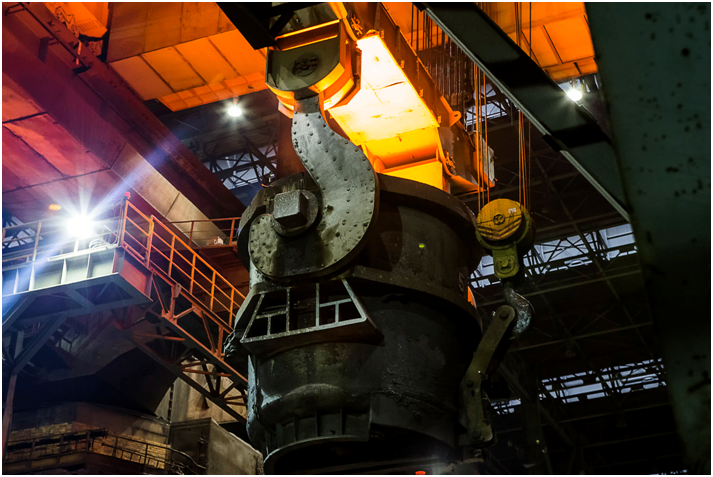Tariffs remain a critical factor affecting global trade markets. On May 30, US President Trump announced plans to increase steel tariffs from 25% to 50%, a move that triggered widespread concerns in global markets. On June 3 (local time), the White House stated that tariffs on imported steel, aluminum, and their derivatives would rise from 25% to 50%, effective June 4 (Eastern Time).
Multiple countries, including China, opposed the policy. Industry insiders believe the policy will have minimal direct impact on China's steel market, but considering re-export trade, it may affect China's overall steel export scale. Data shows that in Q1 2025, Chinese steel enterprises saw profit growth due to cost reductions and export rush, but the sector may still trend downward amid weak real estate recovery in the second half of the year.
Image Source:699pic.com
Limited Direct Impact
At a regular press conference on the afternoon of June 5, China's Ministry of Commerce spokesperson said the US tariff hike on steel, aluminum, and derivatives not only "harms others and oneself," fails to safeguard industrial security, but also seriously disrupts global supply chain stability. Canada, the EU, Japan, and others have also opposed the policy. So, will the US tariff increase affect China's steel market?
According to customs data, China exported 110.716 million tons of steel in 2024, up 22.7% year on year, while importing 6.815 million tons, down 10.9%. Over the same period, China exported 6.3382 million tons of steel billets (up 93.28%) and imported 1.784 million tons (down 45.38%). Calculated in crude steel terms, net exports reached about 113 million tons, a record high up 31.5% year on year.
However, China's steel exports to the US accounted for a tiny share: only 891,700 tons in 2024, just 0.81% of total exports. US International Trade Commission data also shows the US imported $147.3 billion worth of steel and aluminum products in 2024, primarily from Canada, Mexico, and other nations. Thus, direct steel exports to the US affect China minimally. But the 50% tariff will further curb China's steel exports to other countries, impacting overall export volumes.
Q1 Profit Recovery for Steel Enterprises
As a sector with apparent overcapacity in China, steel enterprises reported surprisingly better-than-expected profits in Q1 2025. Data from the China Iron and Steel Association shows key member enterprises achieved 1.436 trillion yuan in operating revenue (down 6.61% year on year) and 21.583 billion yuan in total profits (up 108% year on year), with an average profit margin of 1.50% (up 0.82 percentage points).
Potential Rebound in "Golden September-Silver October"
Q1 profit growth primarily stemmed from falling raw material costs. In Q1, the average import price of iron ore was $99.1/ton, down 21.3% year on year. Key enterprises saw import powder ore costs drop 19.26%, domestic iron concentrate costs fall 17.59%, coking coal costs decline 33.32%, and metallurgical coke costs drop 30.26%.
Three factors drove Q1 profits:
1. Falling raw material prices significantly reduced costs, restoring industry profitability.
2. Slight growth in crude steel output (with steel output up year on year) boosted overall profits.
3. An "export rush" effect: steel exports reached 27.43 million tons in Q1 (up 6.3%), creating profit margins and easing domestic supply pressures.
In the second half, China's steady growth policies—including ultra-long-term special bonds and equipment renewal programs—will support the domestic steel market. However, external uncertainties (e.g., increasing trade frictions) will curb exports. While domestic steel production may face capacity controls, real estate headwinds and export constraints will hinder supply-demand improvements, likely leading to a volatile downward trend. With fiscal and monetary policy support, the traditional "golden September and silver October" peak season may see periodic rebounds.



